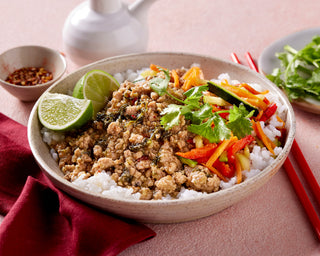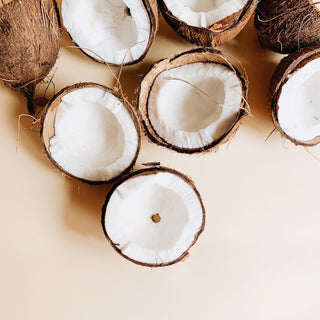Coconut… is it a fruit or a nut?
First things first, what even is a coconut? Fruit or nut? Technically, the answer lies somewhere in between. The coconut – like olives, dates, peaches and even pistachios – is classified as a drupe, a fruit whose flesh encases a hard inner shell containing the seed. These coconut drupes are processed to bring us a seemingly endless list of food products, including coconut water, coconut juice, coconut cream, milk, flour, sugar, vinegar, nectar, butter, and of course good old-fashioned desiccated coconut. Historically, coconuts have been used worldwide for at least half a century. In particular, they have featured heavily in the diets of countries such as Sri Lanka, Thailand and the Philippines, where they have been favoured both for their wide availability and appealing taste and texture. But where are all these superfood claims coming from? Many of those who promote coconut’s health benefits have pointed to the fact that countries traditionally consuming coconut products have generally lower incidence of diet-related conditions such as Type 2 diabetes and heart disease. It’s an appealing theory – cardiovascular disease is a growing problem in Australia, being one of the biggest burdens on both our health and the country’s economy, and it would be nice to believe that the solution is so simple – but the facts are a little more complicated. And while coconut consumption may well have had some influence on these statistics, there are certainly far more powerful factors at play. Genetics, physical activity, and an overall diet that would presumably be low in processed foods and high in fruit, vegetables and seafood – all these could well account for a low incidence of lifestyle-related diseases.What’s wrong with coconut?
Looking at the nutritional profile of coconut, what immediately stands out is the fat content. With the exception of coconut water – the clear liquid from immature green coconuts – most coconut products are extremely high in both total and saturated fat. Coconut oil, for instance, is so high in saturated fat (around 85%) that it’s actually solid at room temperature. Comparatively, olive is around 16%. For this reason, peak bodies such as the Heart Foundation and the Dietitians Association of Australia do not recommend including coconut products as a regular part of a healthy diet.What’s right with it?
Those arguing the case for coconut oil will state that not all saturated fats are created equal; that saturated fats are made up of many different fatty acids, and each affect our bodies differently. This is where it gets interesting, as what appears to set coconut apart from other traditional sources of saturated fat is the large proportion of medium chain fatty acids as opposed to long chain fatty acids found in animal products such as meat and dairy. In general, fats are considered the most difficult and lengthy of macronutrients to digest. Long chain fatty acids are highly insoluble, requiring bile salts for digestion and absorption, before being transported to body tissues for energy and storage. Medium chain fatty acids however, are absorbed and transported directly to the liver, where they are then used for energy. Due to their rapid absorption, proponents say, these medium chain fatty acids are more quickly removed from the body, surpassing the transition into cholesterol and stored fat, and thus are not associated with weight gain.




